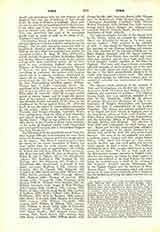

Yakima Indians, a Shahaptian tribe formerly dwelling on the banks of the Columbia, the Wenatchee, and northern branches of the Yakima (Ya-ki-ma, runaway) Rivers, in the east of Washington. They called themselves Waptailmim, “people-of-the-narrows”, or Pakintlema, “people of the gap”, from the situation of their village near Union Gap on the Yakima River. They were visited in 1804 by Lewis and Clark, who called them Cutsahnim. By the treaty of 1855 they with thirteen other tribes gave up the territory from the Cascade Mountains to the Snake and Palus River, and from Lake Chelan to the Columbia, and were to be formed into one body on the Yakima reservation under Kamaiakan, a Yakima chief. But war broke out and the plan was not executed till 1859; even then some of the Palus Indians never came to the reservation. Since then the term Yakima has been frequently applied to all the Indians who observed the treaty arrangements. In 1909 there were about 1900 Indians on the reservation, comparatively few belonging to the original tribe. The Yakima probably followed the main customs of the Shahaptian tribes; they fed on salmon, roots, and berries; carried on commerce between the west of the Cascades and the Eastern Rocky Mountains; and frequently crossed the mountains to hunt the buffalo. They lived in skin tipis and mat-covered dwellings. At present they engage in agriculture and stock-breeding, and are self-supporting. Almost all of them are Catholics, having been converted by the Jesuit pioneer missionaries in the North-West.
A. A. MACERLEAN

